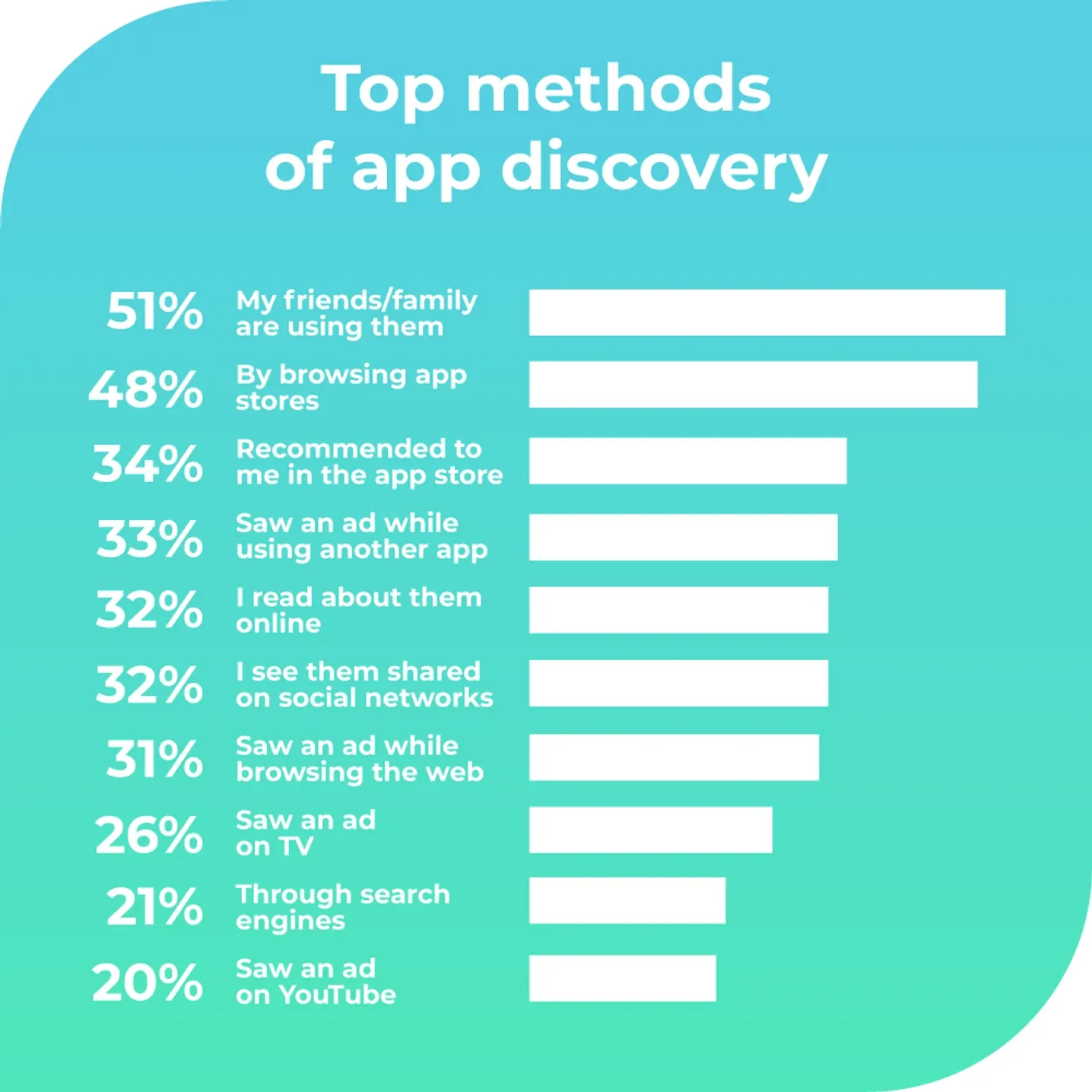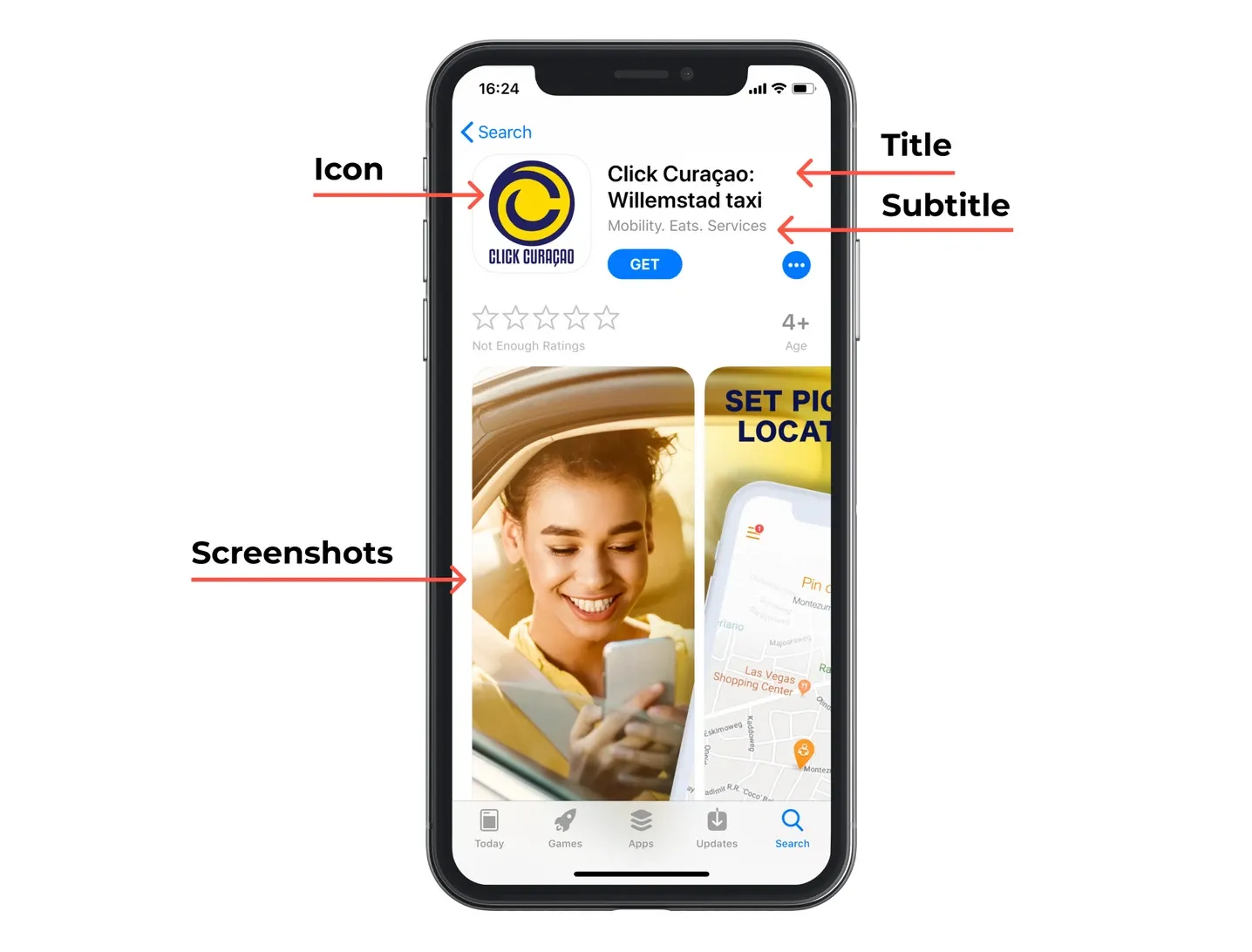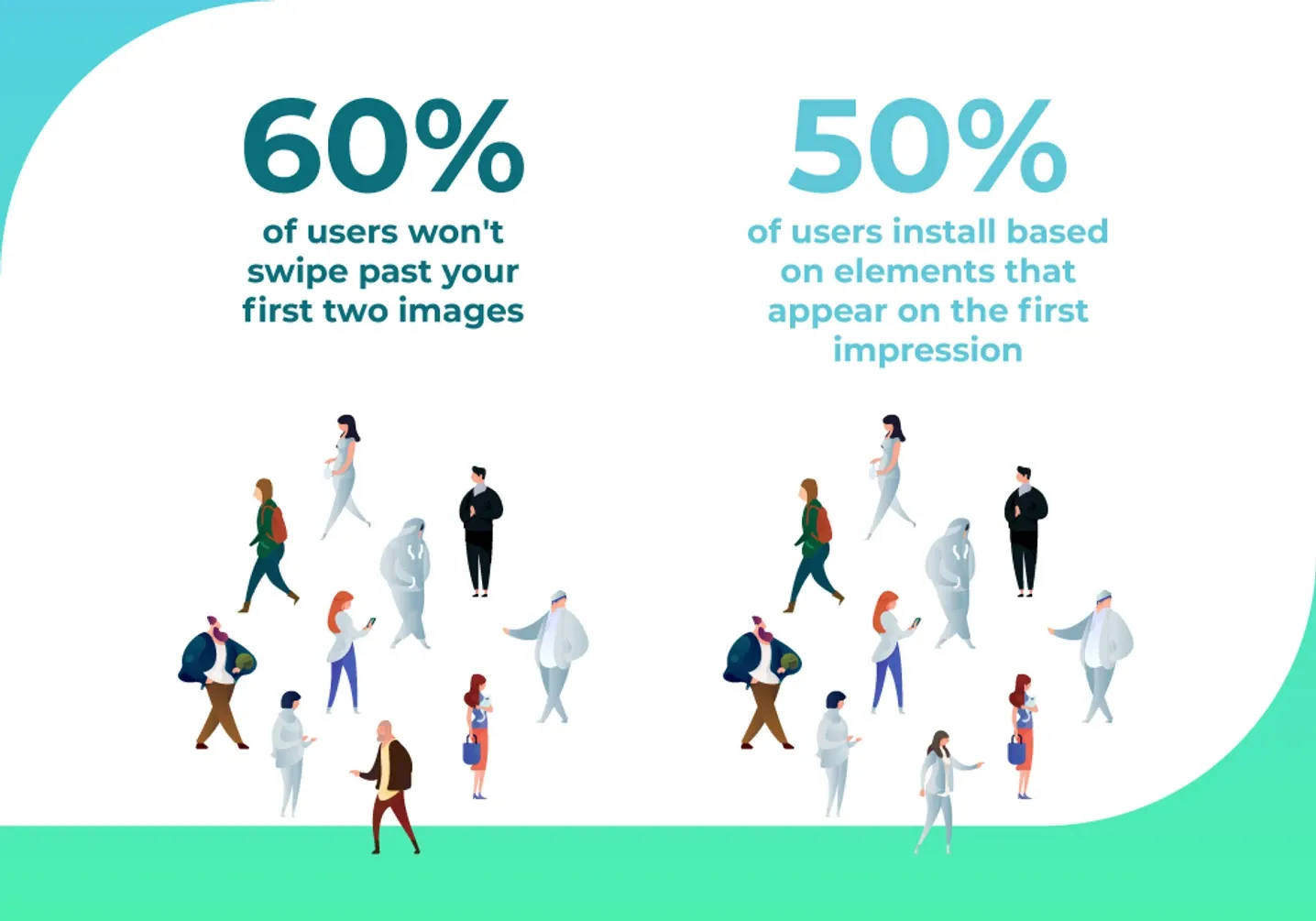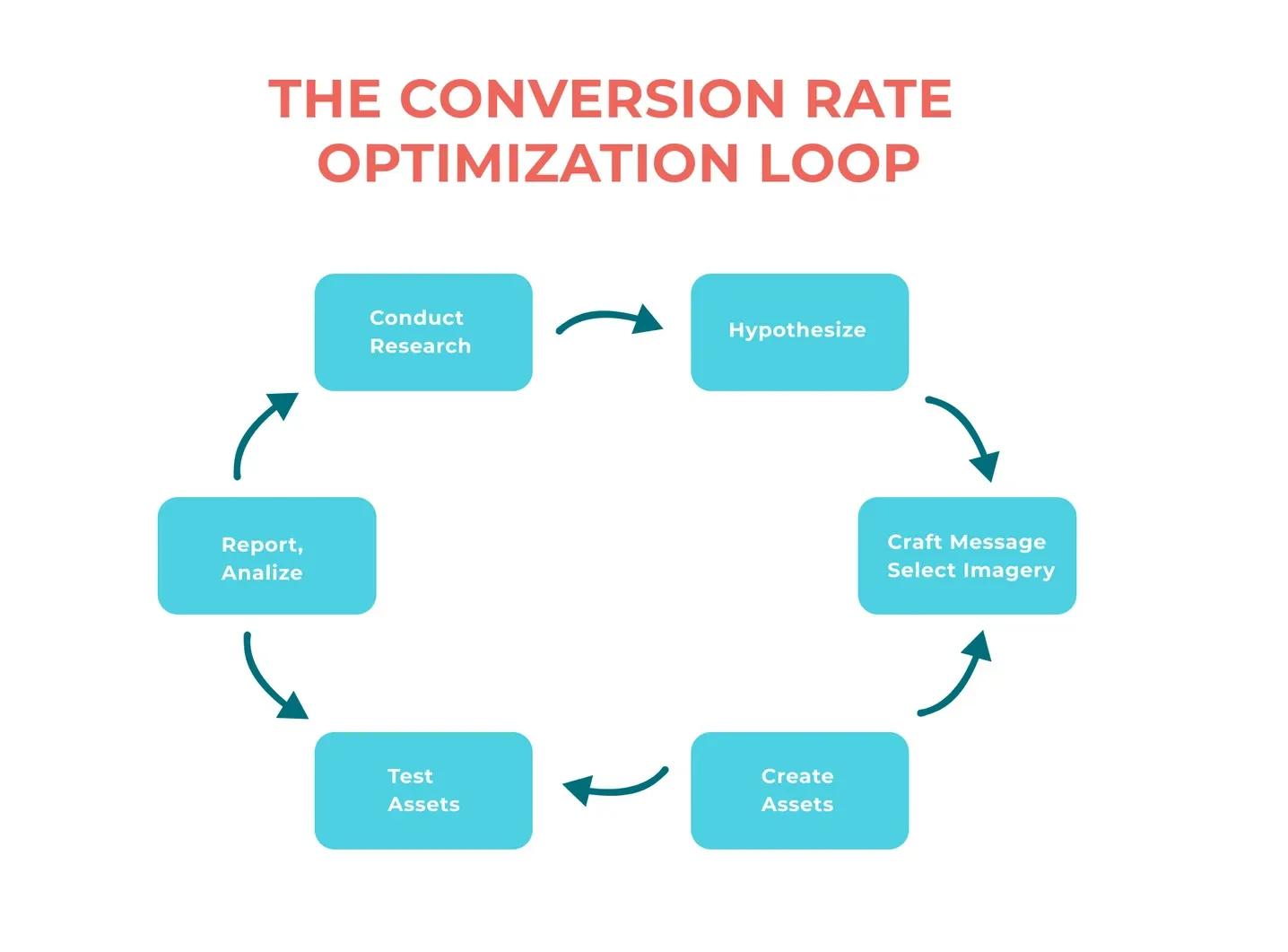Lesson 1.
How people discover apps in the app store?
The statistics tell us, 48% of people find their apps by simply browsing the app stores. How do they make decisions there? The key is: an app has to be visible and its product page has to convert. Learn what it is about in the first lesson of the ASO course.
Overview
Got an iPhone in your hand? Let’s presume it’s a relatively new model, with an iOS 11 on it. You open the App Store. What do you see? Righto! Lots and lots of apps. How do users know what app to download and use?
According to Google statistics, the most popular ways of finding new apps are:
- following the recommendations of friends and family;
- browsing app stores looking for an app for a certain purpose.

Influencing the friends and family recommendations is pretty tricky for a beginner. So let’s concentrate on how to have your app discoverable on the App Store. How do people know what apps to download?
We don’t have much time nowadays, do we? We tend to do things faster, and definitely to avoid stuff that takes us more than a couple of seconds. Any app has about 3 seconds to make the right impression. This time is crucial for you to persuade a potential user to download the app.

After seeing an app for the first 3 seconds, people generally behave in two ways. For 50%, the first impression has done it already. They download (or not) impulsively, driven mostly by visual information they get.
Another 50% tend to tap through. This means, if after the first seconds your app looks good enough, they are going to do some research. They will browse further, see the gallery of your app’s screenshots, read the information you provide, and eventually get to the reviews.
In this course, we will learn to optimize your app for both groups.

The process of the app store optimization includes two major parts: increasing the visibility of your app in the store and increasing its conversion. Translating this into the regular human language, helping people to see your app and encouraging them to download and really use it, respectively.
Visibility: what’s in a word?
The main point of making your app visible is making it work well within the App Store search. Making it findable. This means:
- The app has to be found as the most relevant while searching for certain words or phrases.
- The app’s metadata (title, subtitle, descriptions, keywords set) match the words and phrases users will apply to search for apps like yours.
- The visual elements of your app (icon, feature graphics, screenshots, videos) match the search request (it’s about visual word recognition, we’ll get to it really soon).
- Yourapp has to be placed in the category fitting it the most.
- The ratings and reviews have to demonstrate the high quality of your app.
This way, the discoverability of your app is about optimizing your keywords choice, learning to work with Search Ads, and getting a warm place in the top charts for a certain category/locality.
The goal of increasing visibility is to use verbal and visual elements at full blast, so that the potential users can find your app while searching for the related terms and themes.
What is conversion rate and why care about it?
But then again, imagine: your app is perfectly visible but nobody ever uses it. Hurts, right? The only key to a long-running success of your app is high conversion rates — the number of actual installs and uses. Mainly because the famous Apple algorithms will take care that only the apps people actually useget on the top of the rankings.
Increasing the conversion rates of your app needs some optimization (it’s called CRO, conversion rate optimization). CRO includes working on improving such elements as icons, screenshots, videos, and copy for your app. It requires researching and testing different options a lot.

Okay, it only looks frightening. The reality is much better. Mostly thanks to the many available tools to get the technical part of the work done automatedly. You will learn to use the brightest of them in this course (if you’ll do your homework well enough, hehehe!).
Integral strategy for your app promotion
Let us give you some more Google statistics.

You can see that a lot of people are pretty sensitive to ads. This means optimizing your app for the stores is a half of the work to be done. It is essential to expand your optimization activities to outside of the App Store itself. Optimization outside of the store means:
- exploring new user acquisition sources;
- ensuring a bold web search presence of your app;
- keeping an eye on the statistics about your product (the engagement level, the retention rate, the lifetime value of a client, and many more).
App store optimization is not that scary at all. It is time-consuming, yes, but it gives you a serious advantage and allows to outperform the biggest competitors.
Your “homework” for today
In case you have already launched your app, think of how optimized it is. Does it rank well? Now you know how people find apps and what matters for an integral ASO strategy, what may be the reasons that your app is not yet the #1? Go and do some customer development: ask people (customers, friends and family, drivers, company staff) what may be done to make the app more findable, more attractive. Collect all these ideas and take them with you to the next lesson. See you there.
